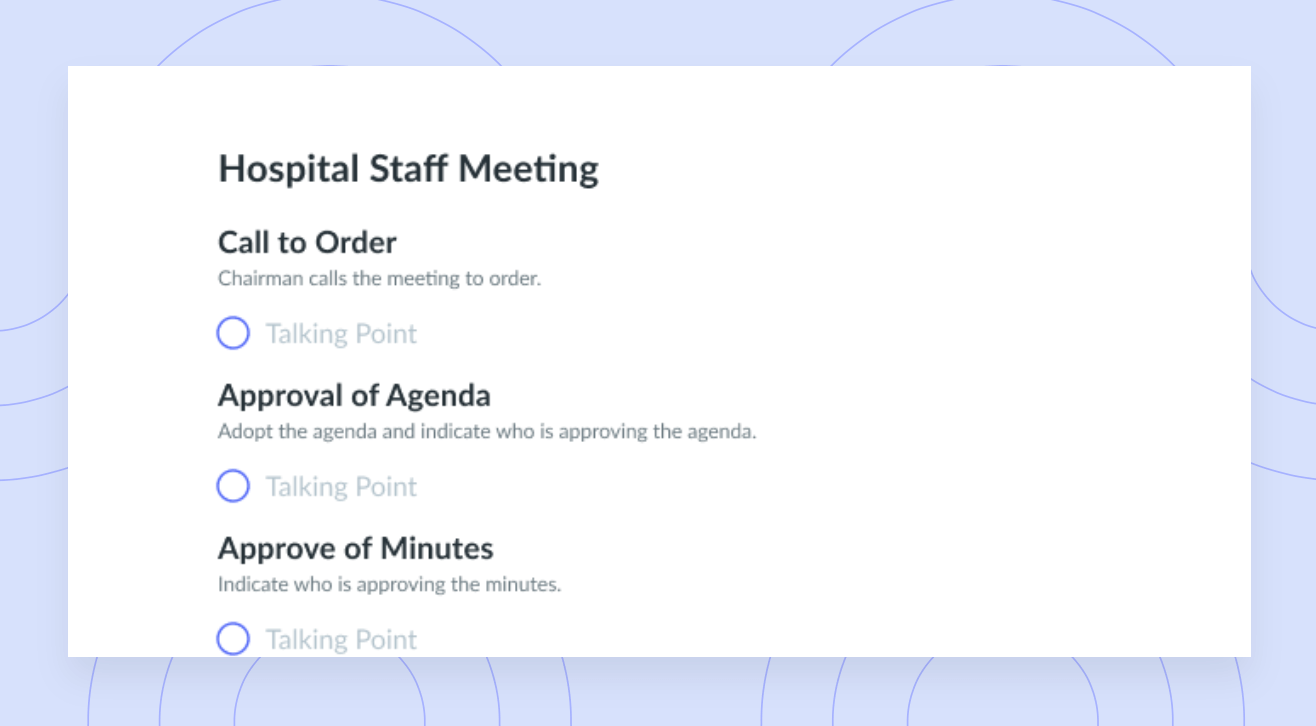11 Tips on How to Avoid Micromanaging Your Team
Are you a helicopter boss? Here's how to avoid micromanaging your team and build better relationships.
You may have heard of a “helicopter parent” who’s intricately involved in every step their child takes. But what if it turns out that you’re a helicopter boss? In the workplace, this approach is called micromanaging: The intrusive, meddling boss is unnecessarily hands-on, impacting work quality, deadlines, and morale along the way. Here’s how to avoid micromanaging your team and how to stop if you’re starting to show some of those tendencies.
What is micromanaging and why is it bad?
Micromanaging means giving feedback on your team members’ work – or, worse yet, taking it over entirely – at every little step of the way. For your team, it can feel like you’re breathing down their neck, causing undue stress and impacting performance as a result.
A realistic micromanaging example can help you better understand this concept. Let’s say you have a team member tasked with completing a report over the course of eight business days. A leader who doesn’t micromanage won’t ask to see the report until those eight days pass. They might ask for short updates at a daily progress meeting to keep things on track, but they won’t get involved in the minutiae.
A micromanager, on the other hand, will get involved in those small details that are intended to be the employee’s responsibility, not theirs. The micromanager would offer excessive feedback or even make changes themselves. This approach is ineffective because it:
- Suggests you don’t trust your team. Imagine if someone kept meddling in your work. You’d probably conclude pretty quickly that this person thinks your work is bad and just doesn’t trust you. That’s no way for your team to feel about you.
- Stresses your employees. Your team is capable, knowledgeable, and responsible. Micromanaging them adds a layer of complication and complexity that can make it more difficult to do what they need to do to get work done.
- Makes your team dependent on you. Picture this: Your team is working on a project, but they can’t move on to the next stage without you combing through your work thus far. If this happens every day and with every project, that’s micromanagement. It makes your team dependent on you to progress, so it needlessly delays work completion.
- Isn’t scalable. It may feel realistic to get hyper-involved if your team is composed of two or three people, but when you get 10, 20, 25, or more people working under your supervision, being this involved becomes downright impossible. Helicopter-bossing, so to speak, just isn’t sustainable as your team grows in size. Standard management approaches are much more scalable.
- Prioritizes the short term over the long term. Micromanagers can obsess over perfecting little details that don’t matter in the grand scheme of things. Is it that big a deal if a graphic in a report is a half-inch over from where you want it? Probably not – what’s more important is that the report contains compelling, relevant, actionable, well-organized information. In focusing on the small details, you miss these more important big-picture aspects.

Pro tip
Use a meeting management tool like Fellow to create collaborative meeting agendas and build trust within your team with open conversations.

11 ways to avoid micromanaging
The below tips on how to avoid micromanaging are great starting points for longtime micromanagers looking to make a change. They’re also great if you feel your micromanaging urges growing – resist them! Or, more accurately, use these tips to fend off those urges for good.
- Ask your team how they want to be managed
- Build team trust
- Decide on a handful of metrics and objectives
- Set deadlines
- Let employees know when to expect feedback
- Prioritize the parts that actually matter
- Be clear about your priorities
- Hire the right people
- Delegate tasks
- Stop being a perfectionist
- Explain why you’re being hands-on
1 Ask your team how they want to be managed
Micromanaging has a profound impact on your team. Think about it – would you want to work in an environment where your work is constantly being meddled with or commented on? And if you’ve been in such an environment, you’ve surely had things to say about it. That’s why, as a leader, asking your employees how they really feel is a great way to avoid micromanaging. You can encourage them to leave anonymous feedback about your management style, so you’re more likely to gain an accurate and thorough picture. Importantly, acting on this feedback is a sign of trust and accountability that will be appreciated by your team.
2 Build team trust
When you trust your team and vice versa, there’s no reason to be intimately involved in the details. That means you won’t need to constantly check on your team’s work. It also means your team won’t worry that their work will inevitably yield all kinds of comments and intrusion from you. As such, both you and your team can work seamlessly and independently.
Trust also helps in those moments when you and your team do need to look at each other’s work. It’s a lot easier to offer feedback (and receive it) when everyone present knows that it’s all intended kindly and constructively. Micromanagers tend to be perceived as people coming at this all pretty harshly, which means that some team members might hesitate to provide meaningful feedback. And do you really want to miss out on that?
3 Decide on a handful of metrics and objectives (and only a handful)
A great way to avoid getting too involved in your team’s work is to limit your opportunities for involvement. That means setting just a handful of metrics and objectives for the project. These should be the only metrics and objectives for which you offer feedback.
Think of these metrics as your team members’ boundaries. If you wouldn’t cross boundaries with your friends and family, why would you do that with your team?
For example, let’s say your head of R&D is hard at work perfecting tweaks that will make your product work twice as fast. Relevant metrics can be completion speed, some sort of safety rating, and user-friendliness. Don’t comment on how the employee reached these goals, and certainly don’t poke your head in on the process while it’s ongoing. Wait for the completed deliverable, then assess solely these metrics and base your next steps around them.
4 Set deadlines
Yes, we know – setting deadlines sounds like obvious advice. But seriously – it’s a great cure for micromanaging. When you know a team member should be getting you a deliverable by a certain date, you also know to leave them to their devices until then.
When you let your team members do their thing until their deadlines hit, you signal your trust in them, further strengthening your team’s confidence and problem-solving skills that can bring about high-quality work. Maybe your employees will unlock the solution to a problem that’s long been plaguing you! And if you’d micromanaged them, you could’ve unintentionally suppressed that tiny miracle.
5 Let employees know when to expect your feedback
To simultaneously step back and keep offering your insights, tell your team when they can expect your feedback. One-on-one meetings are a great option, as they demonstrate your investment in each team member and facilitate open dialogue.
Similarly, you should indicate how much feedback you plan to provide. A team member expecting top-level advice can feel intruded on if you go line by line and get pedantic again. These feelings of intrusion can stifle your team member’s ability to complete tasks in ways that work for them. They can also prevent your employees from focusing on your feedback in a way that helps them learn and grow. It’s hard to do that when there’s no sense of trust.
6 Prioritize the parts that actually matter
Micromanagers risk focusing on tiny, inconsequential pieces of a project rather than the big-picture things that matter to your clients. For example, you might be tempted to fiddle with every line of code on your software engineer’s work. That would be a mistake: What really matters is that the final overall product indeed meets the client’s standards.
Focusing on these tiny bits can make you appear ungrateful for what’s indeed an excellent piece of work. It can also distract you from big-picture issues. For example, maybe a software program’s load speed falls short of reaching the metrics you said were the only ones you’d comment on. That’s easy to miss when you’re so focused on the tiny quirks in your coder’s work.
7 Be clear about your priorities
If you know your team is clear on what matters the most, you don’t have to constantly check to see that they’re focusing on it. You can simply back away while remaining faithful that your team has everything under control. This piece of anti-micromanaging advice largely speaks for itself – just set your goals, deadlines, and metrics, and your team will likely meet them.
8 Hire the right people
Still not confident your team will prioritize things as you’d like? That’s less of an issue when you know your team is composed of the right people for the job. Unless they’re regularly missing their marks, chances are that the reasons you hired them remain valid. So step back and trust them to complete their assignments without your constant involvement.
Similarly, when it comes time to fill another role, don’t feel bad about being picky. The perfect employee – okay, those don’t exist, but surely someone in your application pile comes close – will be someone self-sufficient and talented. There’s no need to micromanage someone like this.
9 Delegate tasks
Micromanaging is mostly about leaders getting too hands-on with their team’s tasks, but it can also involve leaders and team members working too closely together. Namely, when leaders don’t delegate tasks and instead take a bunch for themselves, the chances of you overseeing too many little pieces increases significantly. You’re there to steer the ship, not play the role of everyone who’s working hard below deck.
Given this logic, you’re better off delegating certain tasks to your team. There are also numbers to back this notion. Gallup has found that team leaders who delegate well can yield 33 percent more revenue than other managers. Assigning more tasks to your team isn’t just a great management tactic – it’s a great profitability strategy too.
10 Stop being a perfectionist
Your way of doing things isn’t the only way. Chances are that no two team members take exactly the same approach to a task, and that’s a good thing, as it can encourage new ideas and creative problem-solving. Even if some small things aren’t quite how you’d like, leave them be, as long as the overall package checks all the boxes.
Similarly, imperfections aren’t moments for discipline, punishment, or anything of that sort. Instead, they’re learning opportunities. Use them as launching pads to teach employees what can be done differently and encourage them to reach these goalposts themselves. That said, if you spot repeat mistakes, you might need to do the tiniest bit of micromanaging, so…
11 Explain why you’re being hands-on
When team members consistently make the same errors, they might need a bit more guidance and oversight to avoid that mistake moving forward. In this case, a bit of temporary “micromanaging” isn’t bad. The same is true for the period shortly after onboarding. Even the most qualified newcomers might take a bit to acclimate to your systems.
In both cases, you should explain why you’re being more hands-on and state that you’re not punishing anyone. Instead, your increased presence is a conduit toward full team autonomy sooner than later. Better to nip problems – actual problems, not minute perfectionist details – in the bud now.
Manage overall performance, not the tiny parts
Micromanaging can break the bonds of trust that unite productive, profitable teams. You’ll also find yourself focusing on the tiny parts of a project instead of honing in on the big picture focus that moves your team forward. The feedback you do provide should be constructive and productive, encouraging your team to learn something new as opposed to bending to your smaller whims. Fellow’s feedback tools can help you provide that feedback. You’ll be hands-off, but you’ll also be there when you’re needed the most.





![Better Connect with Your Team Through Peer Meetings [Free Template]](https://fellow.app/wp-content/uploads/2022/03/peer-meetings.jpg)






















